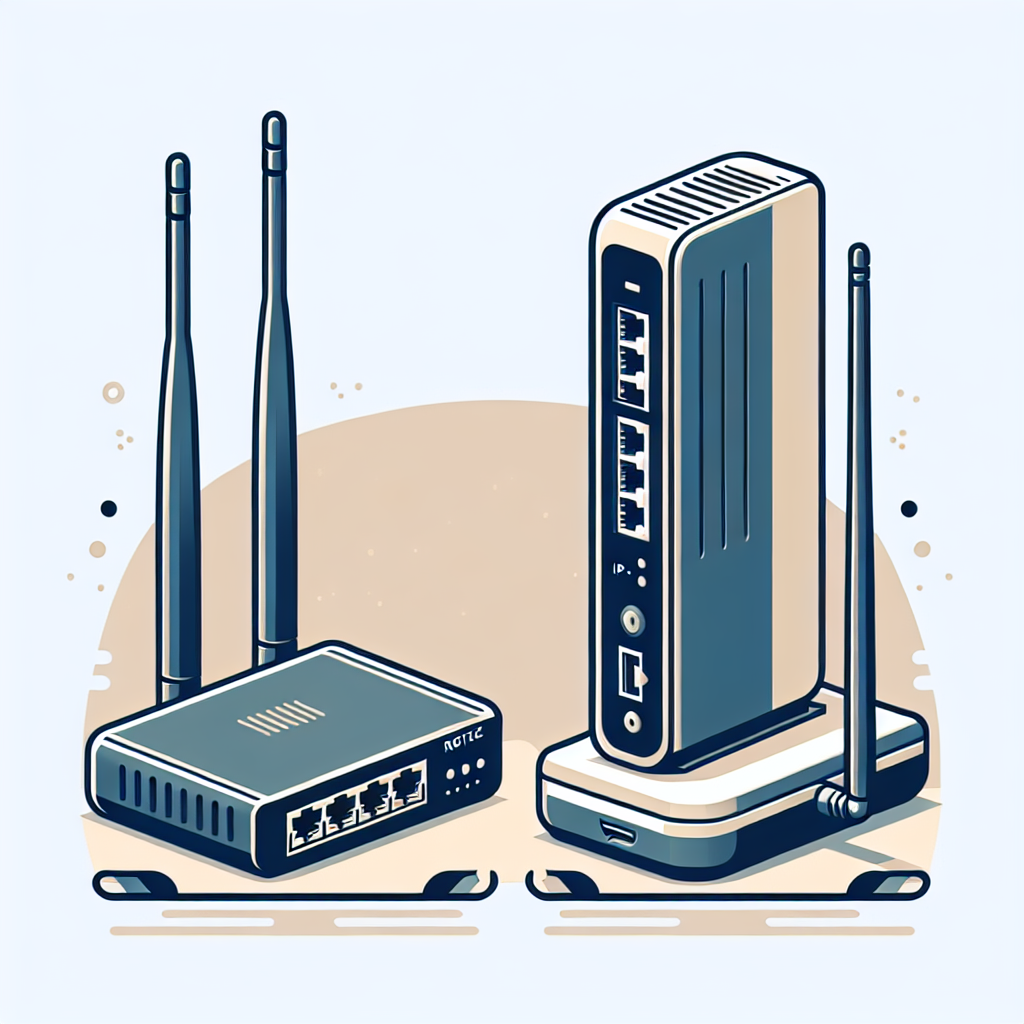Understanding the key components of your home internet setup is crucial for troubleshooting and optimizing your network. Two essential devices in this setup are routers and modems, but many people are often confused about their roles and differences. In the following article, we will explore these devices, their functions, and how they work together to provide you with internet access.
What is a Modem?
A modem (short for modulator-demodulator) is a device that connects your home network to the internet. It translates the data from your Internet Service Provider (ISP) into a digital signal that your devices can understand.
Functions of a Modem
- Connects to the ISP
- Converts ISP signals into digital data
- Authenticates your internet connection
Types of Modems
- DSL Modems: Use telephone lines to deliver internet service.
- Cable Modems: Utilize coaxial cables for internet service, commonly used for cable TV as well.
- Fiber Modems: Use fiber-optic lines for faster internet speeds.
What is a Router?
A router is a device that distributes the internet connection from the modem to various devices within your home network. It enables both wired and wireless connections and ensures that data packets are sent to the correct device.
Functions of a Router
- Distributes the internet connection to multiple devices
- Creates a local area network (LAN)
- Provides network security features
Types of Routers
- Wired Routers: Connect devices using Ethernet cables for stable, high-speed connections.
- Wireless Routers: Provide Wi-Fi connectivity, allowing devices to connect without cables.
- Core Routers: High-performance routers used in large networks or data centers.
Key Differences Between a Router and a Modem
| Feature | Modem | Router |
|---|---|---|
| Primary Function | Connects to ISP; modulates and demodulates signals | Distributes internet within the home; provides local network |
| Placement | First device connected to the ISP | Typically placed after the modem in the network setup |
| Types of Connections | DSL, cable, fiber | Wired, wireless |
| Security Features | Limited to firewall if present | Advanced features like firewall, parental controls, and VPN support |
How Do They Work Together?
The modem and router work in tandem to provide internet access. Here is a step-by-step process of how they function together:
- Step 1: The modem receives an internet signal from your ISP and converts it into a digital signal.
- Step 2: The router then receives this digital signal and distributes it to various connected devices within the home.
- Step 3: The router assigns local IP addresses to each device, ensuring data packets are correctly sent and received.
- Step 4: The router manages both wired and wireless connections, enabling multiple devices to connect to the internet simultaneously.
Do You Need Both a Modem and a Router?
In most cases, yes. The modem is essential for connecting to your ISP, while the router is necessary for distributing that connection to multiple devices. Some devices known as gateway modems combine the functionality of both a modem and a router in a single unit, which can be convenient but might offer limited customization compared to separate devices.
Choosing the Right Devices
Selecting the right modem and router depends on several factors such as your internet speed, coverage area, and the number of devices that need to connect. Here are some tips:
Tips for Choosing a Modem
- Compatibility: Ensure the modem is compatible with your ISP.
- Speed: Choose a modem that supports your plan’s maximum speed.
- Type: Select the type of modem (DSL, cable, or fiber) based on your available service.
Tips for Choosing a Router
- Covers Area: Ensure the router covers your entire home, especially if you have a larger area.
- Connection Types: Look for a router that supports both wired and wireless connections.
- Additional Features: Consider features like parental controls, guest networks, and security protocols.
Conclusion
Understanding the roles of a modem and a router can greatly enhance your ability to manage your home network. While the modem connects you to the outside world, the router ensures that your devices can effectively share that connection. By selecting the right equipment based on your needs, you can enjoy a seamless and speedy internet experience.

